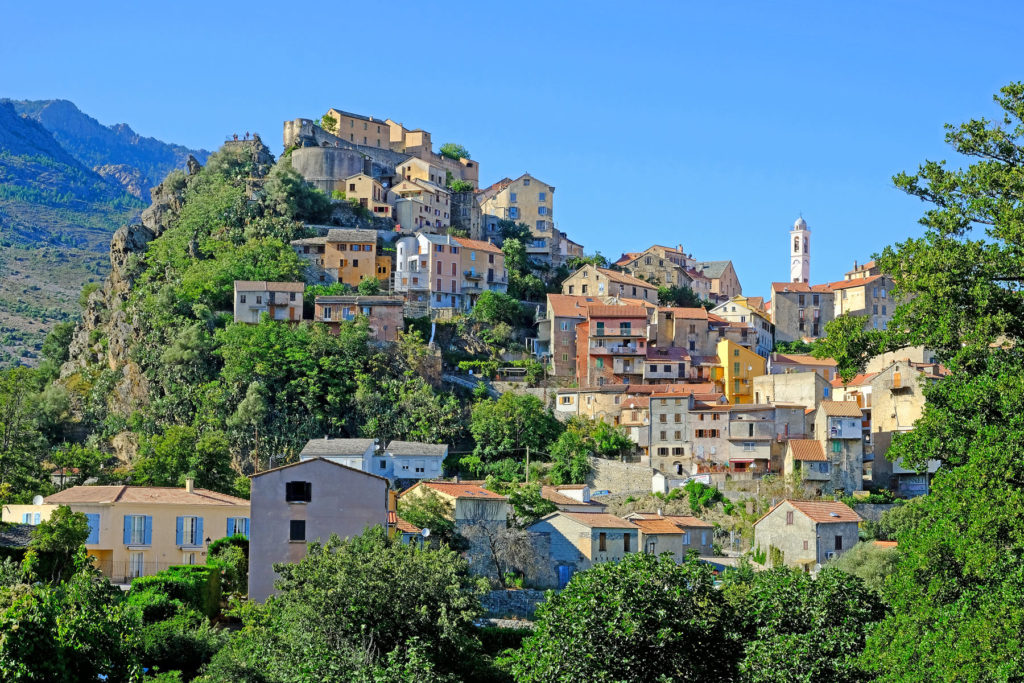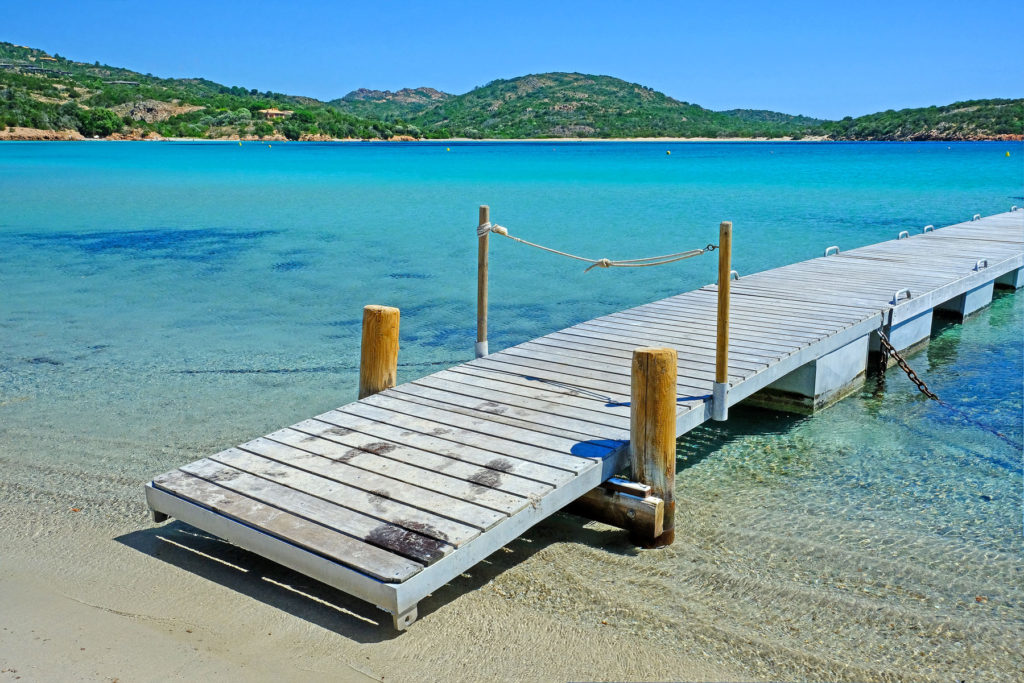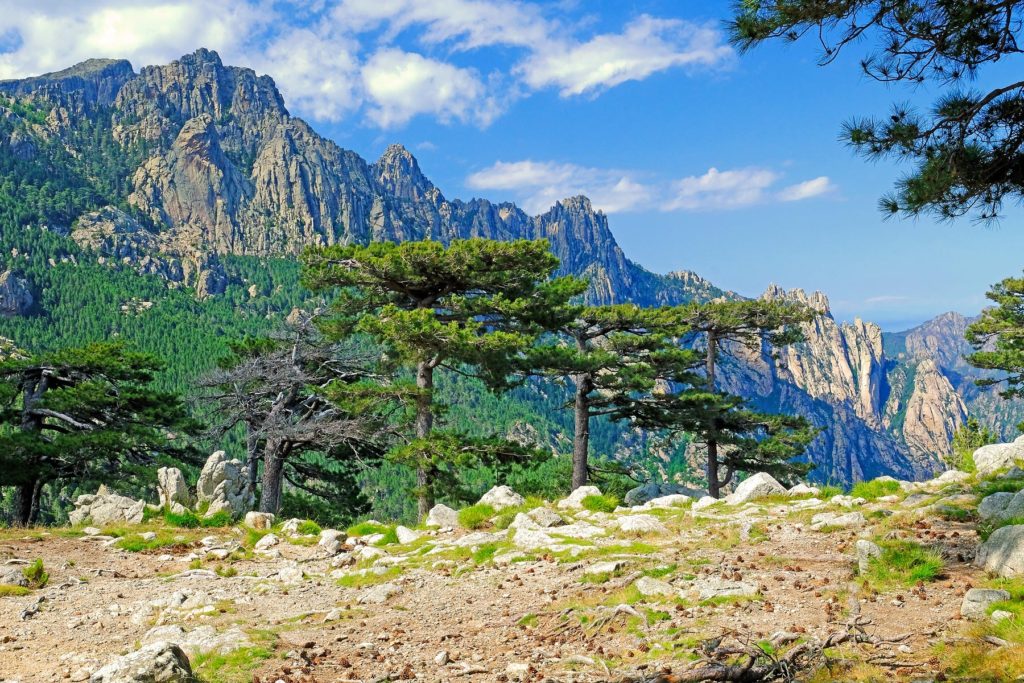
Corsica is a fascinating travel destination famous for its stunning coastline, dramatic mountains, and interesting history. Read on for essential facts and information about the ‘Island of Beauty’ to familiarize yourself with its unique heritage.
This page contains affiliate links meaning I get a commission if you decide to make a purchase through my links, at no extra cost to you. Click here to learn more.

- Corsica is a French island located in the Mediterranean Sea.
- It lies 170 km from the southern shores of France, 83 km from northwestern Italy, and 11 km from Sardinia.
- Being 183 km long and 85 km wide in its broadest part, it is the fourth largest island in the Mediterranean.
- With a surface area of 8722 km² and 339178 inhabitants, Corsica is the least populated territory in Metropolitan France.
- Due to its breathtaking scenery rich in contrasting landscapes, it is known as the ‘Island of Beauty’.
- In coastal areas, Corsica benefits from a mild Mediterranean climate with hot summers and rainy winters. The mountainous interior enjoys alpine conditions at higher altitudes.
- Mountains and hills occupy most of the territory. 120 peaks exceed 2000 m with Monte Cinto (2706 m) being the highest.
- Corsica has 1046 km of coastline dotted with sublime sandy beaches, picturesque bays, and secluded rocky coves.
- Much of the island is blanketed by the maquis, a fragrant scrubland composed of aromatic plants such as lavender, juniper, cistus, or myrtle thriving in the shade of oak, chestnut, and olive trees. Laricio pines dominate higher altitudes of the interior but also frame some of Corsica’s glorious beaches.
- Regional Natural Park of Corsica covers 40% of the island’s territory spreading across 350510 h. It protects mountain massifs, forests, and lakes in central areas as well as other natural landmarks- Calanches de Piana, Gorges of Spelunca and Restonica, or Scandola.

- GR 20, one of the most beautiful long-distance trails in the world traverses the island from Calenzana in the north to Conca in the southeast through some of the most mythical landscapes of the interior.
- There are seven ports that provide maritime links between the island and the European continent, and four airports offering regular connections with various locations.
- Until 1 January 2018 Corsica was divided into two departments- Haute-Corse in the north and Corse-du-Sud in the south. After their merger, a new Collectivity of Corsica (Cullettività di Corsica) was established.
- Ajaccio, the island’s largest city is the capital of the territorial Collectivity of Corsica.
- The Corsican Assembly with a seat in Ajaccio serves as the region’s unicameral legislative body accountable to the National Parliament in Paris.
- A Moor’s Head with a bandana on the forehead is Corsica’s emblem featured on flags throughout the island.
- Corsica’s economic activity is based on tourism, agriculture (citrus, chestnut, olive oil), viticulture, and pastoral breeding.
- One-third of the local population is employed in the public sector.
- The ‘Island of Beauty’ is renowned for the development of renewable energy leading the implementation of innovative new technologies.
- The most popular sports in Corsica are- football (AC Ajaccio and SC Bastia) and volleyball (GFCO Ajaccio Volley-Ball).

- Corsicans are a freedom-loving nation whose patriotic mentality was forged by an eventful and turbulent history marked by centuries of foreign rule, conquest, and battles against the invading powers.
- The Corsican Constitution introduced in 1755 by Pasquale Paoli, the leader of the resistance movement, is considered the first democratic constitution in modern times.
- Dio vi Salvi Regina, a religious song written by Francis de Geronimo around 1675 was adopted as the national anthem of Corsica at the proclamation of independence from the Republic of Genoa in 1735.
- The rich Corsican language, U Corsu, originating from Low Latin and the medieval Tuscan, taught in primary school is still used by many citizens of different age groups. French, the official language is spoken by all Corsicans.
- The island’s dominant religion is Catholicism with Sainte Devote being its patron saint.
- Beliefs and customs predating Christianity are still alive in contemporary culture. The practice of Ochju (chasing away the evil eye) and Mezzérisme are most known.
- Polyphonic singing plays a fundamental role in the island’s cultural heritage. Sang at every occasion, used even as sacred church music, polyphonics originated with shepherds who led their herds to the green grasses of the mountains in summer months.
- Traditional Corsican cuisine is based on the earthy ingredients of the mountains. Wild boar, veal, lamb, and cured meats are signature local specialties. Other staples include brocciu, cheese made of sheep or goat milk, and chestnut products such as pulenda or trout abounding in the island’s rivers. Saltwater fish and seafood are more popular in Corsica’s coastal regions. Local gastronomy also draws on Italian influences– cannelloni, gnocchi, or ravioli are accompanied by a variety of sauces while sun-drenched vegetables are liberally drizzled with delicious olive oil.
- Corsica is famous as the birthplace of Napoléon Bonaparte. Maison Bonaparte in Ajaccio is open to public.
- The island’s prehistoric sites belong to some of the greatest archeological treasures of the Mediterranean. At Filitosa, carved statue-menhirs date back 8000 years.
Please help support CoolCorsica!
If you find this website as useful as a guidebook you may have had to buy to plan your adventures, please consider helping me with a small donation.
This all-content traveler-focused site is created in my spare time with a desire to share comprehensive information, useful tips, and inspiring photos of Corsica’s most scenic locations.
Please note that certain products/services and links to products/services are affiliate links and I may earn a commission for any purchases that you make, at no additional cost to you. I truly appreciate your use of any of the links I share.
With your generous help, I can continue to offer my advice and support in planning your dream holiday.
Thank you for your contribution!
